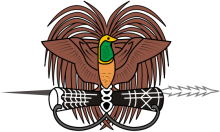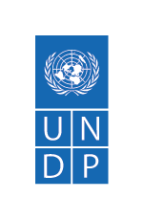Papua New Guinea's Second National Communication - In Progress
Introduction
The creation of a National Communication offers countries the opportunity to contribute with technically sound studies and information that can be used for designing mitigation and adaptation measures, and project proposals that can and will help increase their resilience to the impacts of climate change. Activities generally include: V&A assessments, Greenhouse Gas Inventory preparation, Mitigation Analysis or Education, and awareness raising activities. The ultimate goal is the integration of climate change considerations into relevant social, economic and environmental policies and actions.
The natural environments of Papua New Guinea have developed a capacity over the years to adjust to human activity and changes to the climate. However, in the past few decades, the rapidly changing climate patterns, increasing population growth and intensity and levels of uses of natural ecosystems may affect the ability of these systems to respond to such change. PNG has already been buffeted by extreme weather and climate events such as those brought about by the El Nino in 1997/98 with further changes in temperatures and sea level rise predicted over the next 100 years.
These events will lead to inundation of low lying inland and coastal areas, including the atoll islands, bleaching and loss of coastal defences. Loss of wetlands, changes to the fisheries, forestry and agriculture sectors, alteration to water resources and land use practices and impacts on health, particularly vector borne diseases such as Malaria other related water and air borne disease are also expected.



Project details
Papua New Guinea occupies the eastern half of the island of New Guinea as well as numerous offshore islands. With a land area of 462,840 square kilometers and a population of over 6.1 million, Papua New Guinea is the largest country in the Pacific region both by geography and population. It has an abundance of natural resources, with mineral deposits like copper, gold and oil accounting for nearly two-thirds of Papua New Guinea’s export revenues. Still, 85 per cent of the population relies on subsistence agriculture.
The natural environment throughout PNG is extremely fragile and highly vulnerable to both natural and human impacts. During the last 50 years or so, increasing pressures on resources are intensifying the country’s exposure to extreme events such as natural hazards like cyclones, droughts, earthquakes and tsunamis. In addition to these threats and pressures to the environments of PNG are the expected changes that may arise from climate change and climate variability, which will likely further exacerbate these impacts and deplete the resources that are most essential for basic life support systems.
The natural environments of the country have developed a capacity over the years to adjust to human activity and changes to the climate. However, in the past few decades, the rapidly changing climate patterns, increasing population growth and intensity and levels of uses of natural ecosystems may affect the ability of these systems to respond to such change. PNG has already been buffeted by extreme weather and climate events such as those brought about by the El Nino in 1997/98 with further changes in temperatures and sea level rise predicted over the next 100 years. These events will lead to inundation of low lying inland and coastal areas, including the atoll islands, bleaching and loss of coastal defences. Loss of wetlands, changes to the fisheries, forestry and agriculture sectors, alteration to water resources and land use practices and impacts on health, particularly vector borne diseases such as Malaria other related water and air borne disease are also expected.
As an island surrounded by the vast Pacific Ocean and the adjacent large land masses of Australia and Asia, the climate and weather pattern of PNG is heavily influenced by excess heating due to its proximity to the equator. Likewise, the biannual east–west circulation of warm air masses, weather patterns of Australia and the variable topography of the country with high mountain ranges also has an influence. In recent times, surface temperatures have increased by about half a degree Celcius since the mid 70s, while rainfall has reduced in some areas by as much as 15%. Nevertheless, there is still a relatively clear regional pattern of distribution. Sea level changes of up to 30 mm per year have been directly related to El Nino Southern Oscillation (ENSO).
Adaptation Needs and Priorities
The main sources of climate change vulnerabilities identified by Papua New Guinea (MEC, 2000) are:
- Coastal and Marine Environments: due to the potential for sea level rise, bleaching of corals, loss of wetlands, loss of freshwater (through seawater intrusion), and changes in the abundance and health of marine resources.
- Human Health: potential for severe storms, drought, declines in water resources, impacts on agricultural resources, and an increase in vector-borne and other diseases (including malaria).
- Agriculture and Land Use Change: potential for unsustainable forestry and the monsoon season may create more landslides and/or degradation of soils if storms occur with more frequency, climate variability to affect crop production, and enable declines in soil fertility.
A number of adaptation priorities have been identified to reduce vulnerabilty to these anticipated impacts. These needs mainly focus on the integration of sustainable development practices into natural resource extraction (MEC, 2000).
National Level Policies and Strategic Documents
Papua New Guinea released its Initial National Communication to the United Nations Framework Convention on Climate Change in 2000 (MEC, 2000). Subsequent policy related initiatives, such as efforts to integrating adaptation into sectoral policies and planning processes and/or the establishment of a national adaptation strategy, have not been identified.
Current Adaptation Action
There are is a high number of adaptation projects and programs underway in Papua New Guinea relative to other countries in the region. While most of these projects involve multiple countries, a current initiative being executed exclusively within Papua New Guinea focuses on disaster risk management in the agriculture and transport sectors. These projects are addressing needs related to a variety of sectors, with a greater number of projects focusing on agriculture, disaster risk reduction, and coastal zone management; most have a clear focus on capacity building. The majority current projects in Papua New Guinea are funded by the Asian Development Bank (ADB), the Australian Agency for International Development (AusAID) and the United States.
Proposed Adaptation Action
Papua New Guinea has developed projects for future implementation that have been submitted to the Special Climate Change Fund (SCCF) and the Adaptation Fund for consideration. These projects will focus on marine resources management, disaster risk reduction and agriculture.
Sources:
- Dohan, Rosemary; Hove, Hilary; Echeverría, Daniella; Hammill, Anne, Parry, Jo-Ellen. (2011) “Review of Current and Planned Adaptation Action: The Pacific.” Adaptation Partnership/International Institute for Sustainable Development, pp.106-114.
- Central Intelligence Agency [CIA] (2011). Papua New Guinea. The World Factbook. Retrieved from https://www.cia.gov/library/publications/the-world-factbook/geos/pp.html
- Ministry of the Environment and Conservation [MEC] (2000). Papua New Guinea Initial National Communication under the United Nations Framework Convention on Climate Change. Retrieved from http://unfccc.int/resource/docs/natc/papnc1.pdf
- National
- Country Office
- National Governments
Through improved identification of national circumstances, government agencies and other actors will increase their abilities to insulate at risk urban and rural populations from the adverse effects of climate change.
- Government of Papua New Guinea
- Global Environment Facility (GEF)
- United Nations Development Programme (UNDP)
News
Key results and output
- Sustainable development and the integration of climate change concerns into medium- and long-term planning
- Inventories of anthropogenic emissions by sources and removals by sinks of greenhouse gases
- Measures contributing to addressing climate change
- Research and systematic observation
- Climate change impacts, adaptation measures and response strategies
- Education, training and public awareness
Coastal and Marine Environments
- Coastal management policy and planning
- Maintenance of the integrity of the natural systems and their buffers is important in the face of climate change. Government policy needs to take account of the potential impacts of likely changes in sea level, the need to avoid development in areas prone to inundation or accelerated erosion and the need to ensure the safety of people.
- The adverse effects of natural hazards are particularly important at provincial government level because the hazards usually have localized effects. Local authorities have a stake in avoiding, minimizing, and mitigating the costs and effects of natural hazards.
Integrated Coastal Management
- Integrated coastal management is needed as a long-term approach. However, in the PNG context, truly integrated institutional approaches are unlikely in the foreseeable future, but these are not needed. What is needed is institutional coordination horizontally (across sectors) and vertically (local - provincial – national), that can be achieved at relatively low cost and with minimal institutional restructuring.
- Community based monitoring and Management - There is essentially no routine monitoring of PNG’s marine environment, except for private programs operated by mines. Academic institutions and research stations have initiated a few monitoring efforts but these are not directly linked to management efforts.
- The few examples of successful management interventions to ensure sustainable use of PNG’s coral reef resources generally involve community-based initiatives such as codes of practice or voluntary efforts by local industry groups. The level of a project’s physical presence on site should match community commitment.
Integrated Research
- Recommendations for integrated research in ecosystem need to focus on finding out the distribution and structure of species and ecosystem; storm events to help understand ecosystem engineering and site rehabilitation; identification of human use patterns; cultivation and management of mangroves and testing of village based ecosystem care units and; identification of sources of income from traditional shell fishing to shell crafting. Building capacity in provincial and national government agencies
- PNG has generally adequate environmental legislation but very low, and declining, capacity to implement it. The environmental planning and management capacity of relevant national and provincial government agencies is extremely limited, hampered by the nation's political and economic instability and a seemingly endless process of institutional reorganization. For example, the OEC was recently downgraded from a cabinet department, and staff cut by 50%. Even before this the department suffered from critical shortages of human and financial resources.
- The management of threats such as urban development, watershed degradation, large-scale industrial development, and commercial fishing urgently require technical staff and institutional capacity in provincial and national government agencies. Capacity building is hampered by cultural obligations and work demands, inefficient bureaucracies and funding constraints.
Hard and Soft Measures
- Structural measures such as sea walls and groins are costly and provide few benefits other than protection of erosion and safeguarding of assets only on a short term basis. Sea walls may also increase problems downstream. Therefore, structural options should be screened for their compatibility with community aspirations.
- Soft options involving revegetation to stabilize the shoreline are less costly but need constant maintenance. They may also be easily affected by increased storminess and wave action. Set back areas also help control development.
FISHERIES
- Adaptive Management - Adaptation strategies should be aimed at acquiring a capacity to respond to unexpected changes in the environment by quickly changing fishery management approaches.
- Develop aquaculture - Aquaculture helps to relax the gap between demand and supply and will reduce the pressure on wild stockings. Reduce post harvest losses New technology may help reduce by-catch and maintain fish quality.
- Stronger regional collaboration for management and research
- For tuna fisheries, PNG needs to continue it’s strong involvement in the establishment of multilateral agreements with distant water fishing nations.
- Poor resolution of climate models are not able to predict changes at the scale of fish recruitment. Data on the spatial and temporal distribution patterns of tuna can help fish management authorities adjust their management practices.
- Data collection systems - Aside from data on a few fisheries stocks, existing information on the marine environment to establish any form of baseline against which trends might be identified as a basis for management is almost completely inadequate.
Agriculture, Land Use Change, and Forestry
- Micro credit and small business expansion - Traditional agriculture in PNG is based on a rotational bush fallow system, which is highly productive and generally sustainable, providing population pressure does not force the use of too short a rotation period. However, in order for households to maintain food and nutritional security throughout the year, they must have access to sources of income through on-farm or off-farm activities. This requires both a supportive policy and planning system at the national level, effective extension services and access to credit and business opportunities.
- Research into new plant varieties, crop rotation, use of irrigation, altered nutrient levels and plantation forestry alternatives.
- Research is needed to find out more about adaptive measures that exist such as breeding and genetic programs; protection systems such as fire, insects and diseases; the regeneration potential of natural forests whether intact or logged; suitable plantation site and species selections; and suitability of indigenous species.
- Sustainable natural forest Management - One of the most contentious issues that the forest authority needs to address is how can it expand its programme on forest replacement and implement its policy on sustainable natural forest management when it is faced with the dilemma that the land and the forests on it are owned by the customary owners who may have other uses for their land and forests.
- New technologies - The introduction of new and/or improved codes of practice, reduced impact logging, the provision of better information about timber stands, and the upgrading of the resource management capacity of the forestry professionals, technicians and field supervisors are key elements in the process of achieving sustainable forest management.
- Strategies for future farming developments through the introduction of sustainable subsistence crops and the introduction of new farming methods and practices are needed.
- Capacity Building - Capacity building initiatives should be focused on piloting innovative extension systems, improving and integrating farming technologies, strengthening agricultural data collection and planning and expanding micro credit and small business training facilities.
- Woodlot establishment, agroforesty and tree planting supported by active forestry extension.
Biodiversity
- Strengthen and enforce policies that protect critical habitats
- Increase awareness of visitors and the public concerning the value of species and biodiversity
- Maintain gene pools through a system of connected protected areas
- Strategic policy - The National Biodiversity Strategic Action Programme initiative, developed out of the Convention on Biodiversity, will provide the framework for an integrated strategy for the country. The OEC will need considerable strengthening if it is to oversee the coordination and implementation of this strategy. Landowner issues may also need to be resolved.
Water Resources
- Invest in new water technologies, particularly for recycled water.
- Encourage integrated water management approaches
- Changes in hydrological characteristics are likely to lead to changes in the aquatic and wetland ecosystems and increase demands for irrigation from the agricultural sector. Integrated water resource management under a ‘no regrets’ response option requires intensive investment but it has the potential to draw independent water users under one governing agency. Incorporate climate change into water management legislation
- Ensure that Climate Change and variability is incorporated in various Environmental and Conservation Acts, but focusing on water and including monitoring, data collection and management of the water resources.
- Transfer of new technology to assist with water projects/ activities
- Project developers have been encouraged to upgrade capability and capacity building for water quality monitoring and assist in the acquisition of upgraded resources to enhance national technologies.
- Develop alternative water sources such as rainfall catchment devices as well as saltwater and brackish water desalination plants
Health
- Control vector borne diseases
- Reduction in heat stress through infrastructure improvement including adoption and enforcement of more stringent building codes
- Health care infrastructure needs to be upgraded but support for these measures will place a large burden on public expenditures.
- Comprehensive disaster management programmes
- Preventative health care through public awareness programmes
- Improve medical services The government is in the process of decentralizing the country’s health system from the national to the provincial and district levels to enable more cost effective and coordinated delivery of services.
Reports & publications
Videos & multimedia
Monitoring & evaluation
In 1992, countries joined an international treaty, the United Nations Framework Convention on Climate Change, to cooperatively consider what they could do to limit average global temperature increases and the resulting climate change, and to cope with whatever impacts were, by then, inevitable.
Parties to the Convention must submit national reports on implementation of the Convention to the Conference of the Parties (COP). The required contents of national communications and the timetable for their submission are different for Annex I and non-Annex I Parties. This is in accordance with the principle of "common but differentiated responsibilities" enshrined in the Convention.
The core elements of the national communications for both Annex I and non-Annex I Parties are information on emissions and removals of greenhouse gases (GHGs) and details of the activities a Party has undertaken to implement the Convention. National communications usually contain information on national circumstances, vulnerability assessment, financial resources and transfer of technology, and education, training and public awareness.
Since 1994, governments have invested significant time and resources in the preparation, collection and validation of data on GHG emissions, and the COP has made determined efforts to improve the quality and consistency of the data, which are ensured by established guidelines for reporting. Non-Annex I Parties receive financial and technical assistance in preparing their national communications, facilitated by the UNFCCC secretariat.
Newsfeed
Contacts
- UNDPYamil BondukiCoordinator, National Communications Support Programme (NCSP)
- UNDPStanley WapotCountry Officer
- Somare FoundationGwen SissiouProject Affiliate
